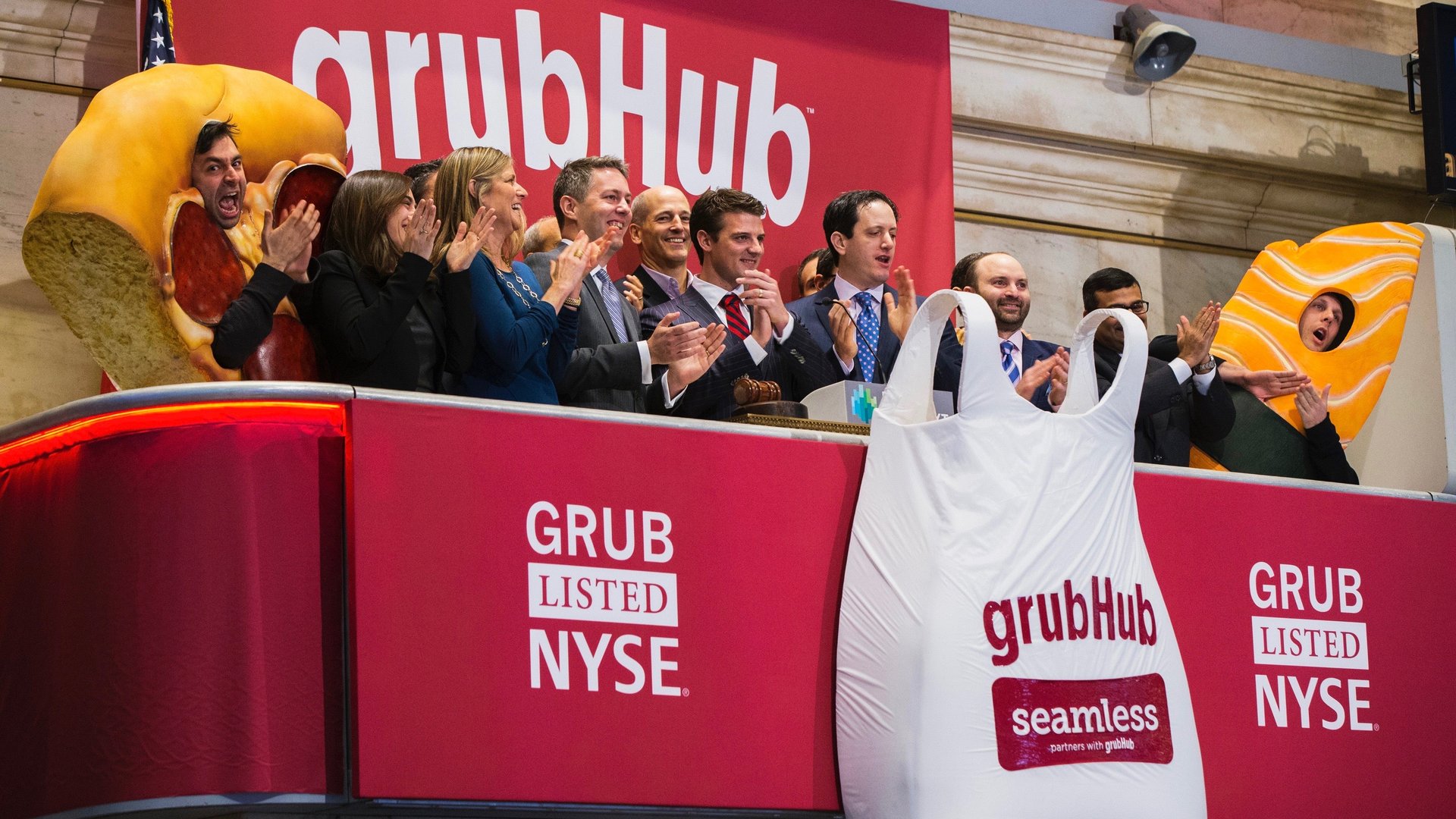The growing push to solve the plastic nightmare of takeout food
The package arrives in a brown paper bag, receipt stapled snugly to its top. The delivery person hands it over into anxious, impatient hands, followed by a rush to the kitchen table, where the bag is gleefully ripped open.


The package arrives in a brown paper bag, receipt stapled snugly to its top. The delivery person hands it over into anxious, impatient hands, followed by a rush to the kitchen table, where the bag is gleefully ripped open.
Inside is a sight for sore eyes. Here’s the spicy salmon and avocado roll. There’s the edamame. Oh, and don’t forget the hot miso soup.
The meal? Inhaled in mere moments. The aftermath? Frankly, a bit disconcerting.
Was all this plastic necessary?
No one has tabulated the amount of plastic waste that comes from takeout orders—which have surged in popularity since app-based ordering services such as Seamless, Postmates, Uber Eats, and Caviar have made the experience more convenient for people. What experts do know is that people use and discard an enormous amount of plastic, contributed to by the takeout economy.
The total amount of plastic created since humans first started making it is estimated to be more than 8.3 billion metric tons (pdf). Here’s the real kicker: 91% of plastic isn’t recycled.
Consider a single plastic bottle: It takes more than 500 years to biodegrade. And plastic is everywhere. There’s a giant island of the stuff floating in the north-central Pacific Ocean. It’s even in snow.
But back to sushi. Are those little cups for soy sauce necessary? The plastic spoon for the soup? The plastic wrap around every pair of chopsticks?
A burgeoning movement of people inside and outside the restaurant industry think not, and they’re looking to start new companies and big initiatives to prove that you can have your takeout without throwing it away, too.
The partnership model
In November 2019, Adam Farbiarz decided to start a company that would attempt to tackle takeout plastic waste in New York. The startup, DeliverZero, is still small; its service is currently limited to just 15 restaurants between Brooklyn’s Park Slope and Williamsburg neighborhoods. The concept is pretty simple, though.
Farbiarz approaches restaurants that use delivery services such as Seamless, and for a commission provides them with durable plastic containers meant to be used many, many times. Customers who sign up for the DeliverZero service can order their food from those select restaurants and have it delivered in those containers.
“When it’s time to return the containers, you return them to the delivery guy on your next order,” Farbiarz says. “You essentially are swapping out containers.”
Customers can keep their containers for up to six weeks (any longer and they’ll be charged $3.25 per item and become the owners). But when it’s time to return them, the next food deliverer working with a DeliverZero restaurant can take the containers to any participating restaurant, where they will be washed and reused for another DeliverZero customer’s order.
It’s not a perfect system, and lots of hiccups can occur. DeliverZero only offers three distinct size and shaped containers, delivery people are asked to carry around empty containers, and restaurants are responsible for washing more dishes. The premise of the company is that people will be responsible in returning their plastic containers, or else they’ll continue to contribute to the overall plastic waste problem.
But there are upsides, too. Aside from less plastic, the restaurants can spend less on buying single-use items. Farbiarz says he hopes to expand to 100 restaurants in New York by the end of 2020.
The in-house model
Some places are trying to develop their own internal solutions for the takeout waste problem.
Also based in New York, Dig is a quick-service restaurant chain that works to be as sustainable as possible, an effort led by Elizabeth Meltz, its head of environmental health. She introduced a program called Canteen, which addresses single-use plastic usage.
As part of Canteen, customers download an app, and agree to pay $3 a month for a service that allows them to take reusable bowls from Dig locations and then return them when they’re finished. It’s an exchange and return model.
Canteen has been in operation at two locations since the end of 2019, with a third being added in coming weeks. The company declined to say how many people are participating so far. Like with DeliverZero, there is no one perfect bowl, and consumers have questioned why they should have to pay any money to participate at all. The latter is a fair question, Meltz says, while offering a counterpoint that restaurants have to pay for the dishwashing manpower, as well as the extra soaps.
The company hopes to expand the service to all their locations by the end of 2021.
“I do think [the concept] has been bubbling up in the industry for the last year or two,” Meltz says. “Coffee came first.” Consumers at Starbucks and other coffee chains are encouraged to purchase and reuse their branded cups—often for a modest discount.
Whether the idea can translate into restaurants remains to be seen. Services will need to prove to be convenient for consumers (potentially with a reward), manageable for delivery drivers who will be asked to carry around empty containers in addition to other deliveries, and accommodating to restaurants that each have their own specific needs and processes. Until then, environmentally-conscious consumers will have to practice mindfulness when opening their food delivery apps.